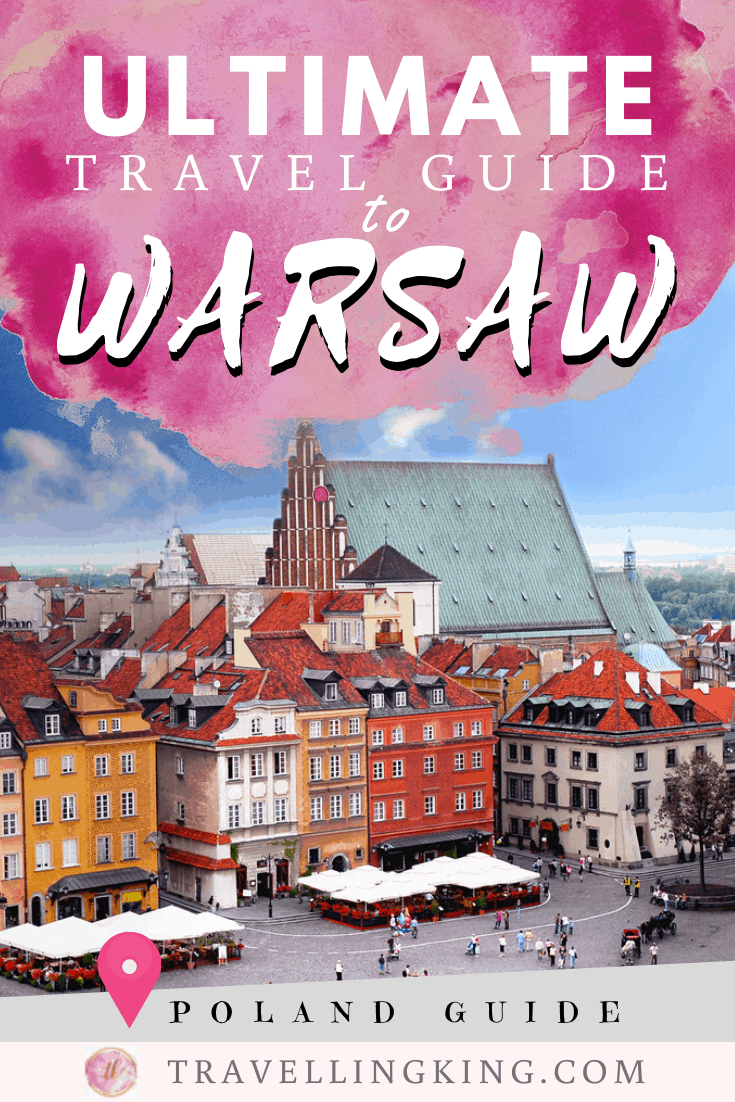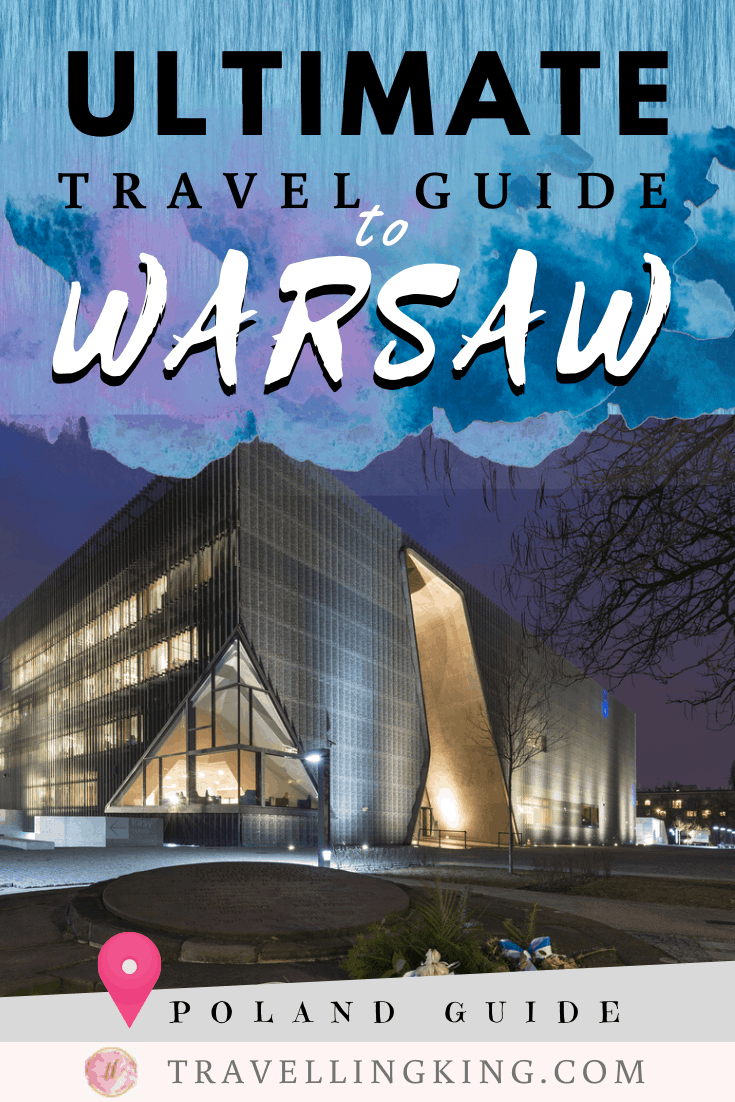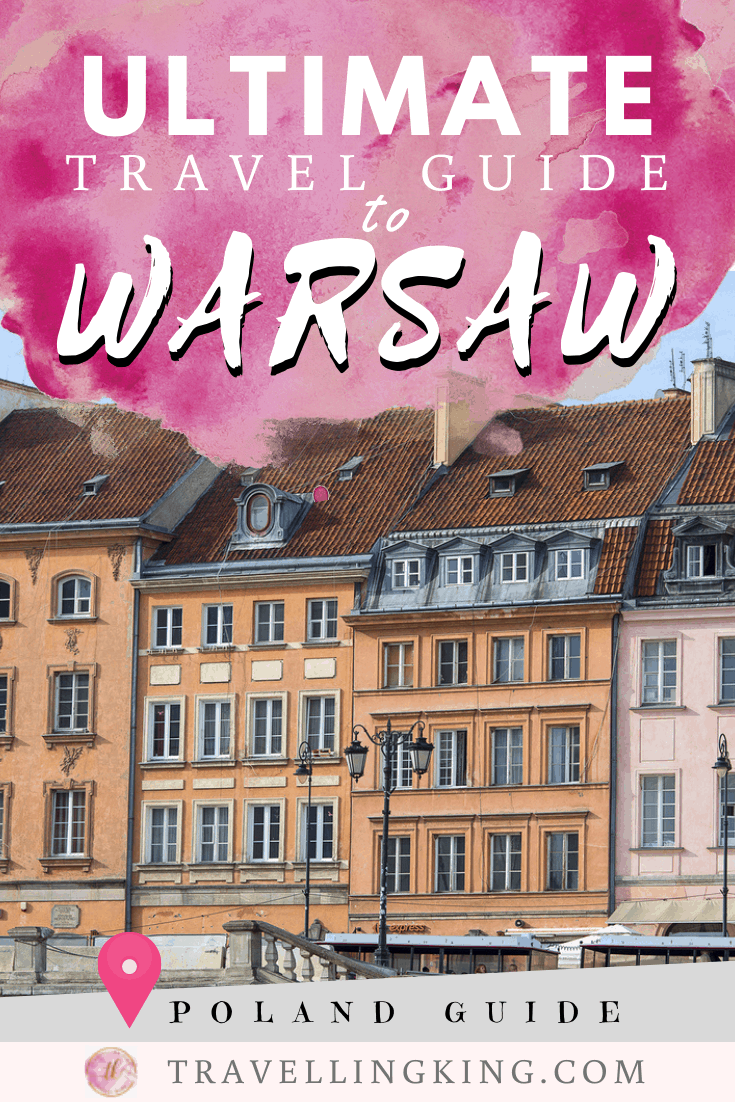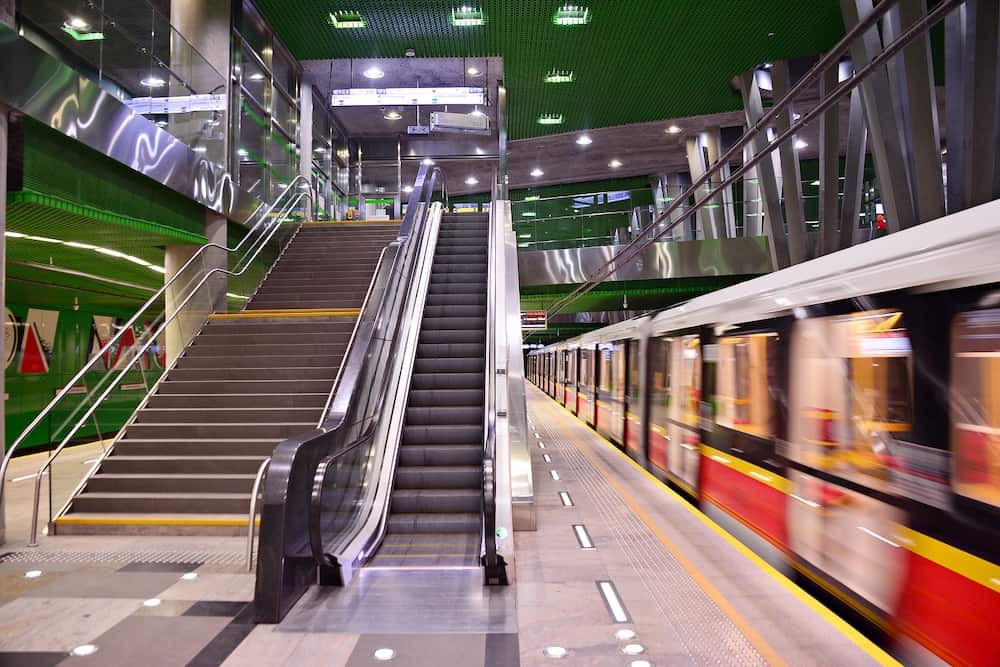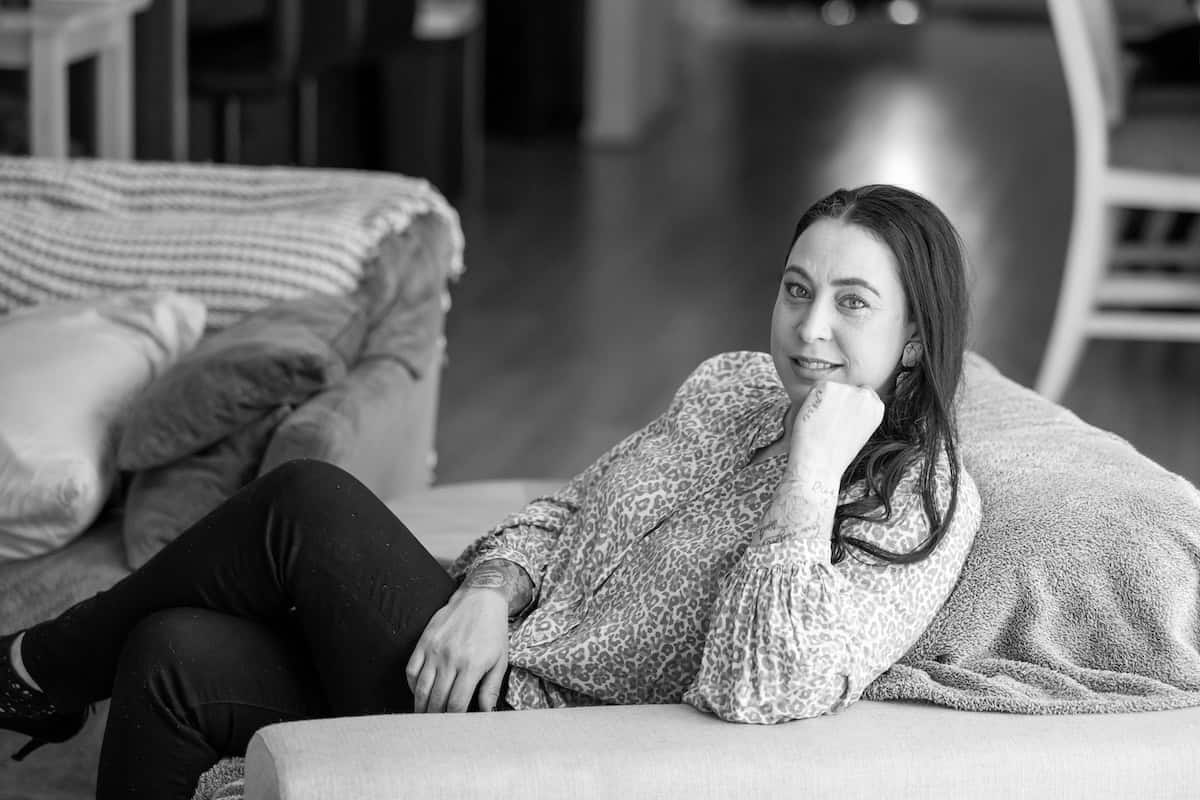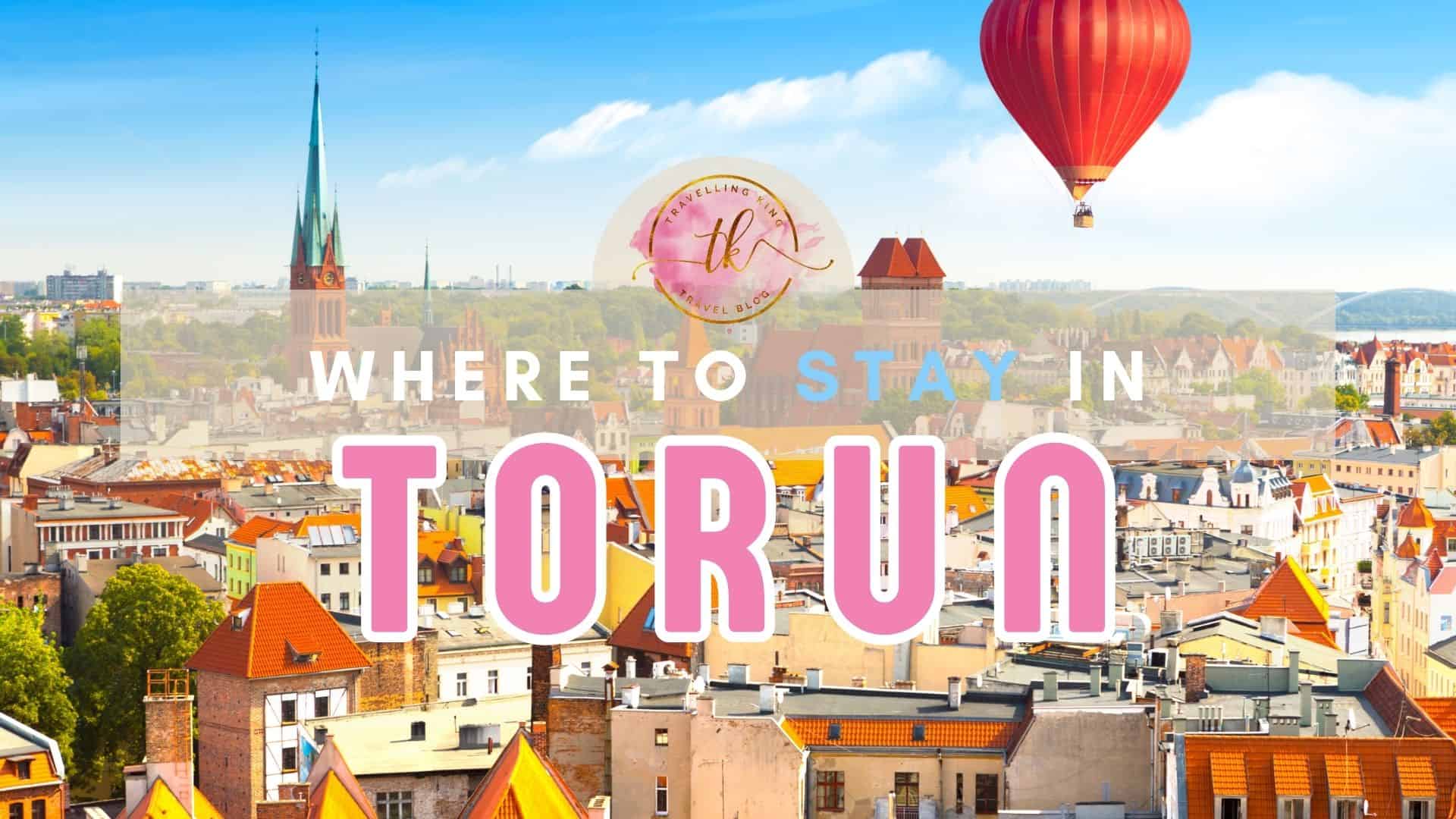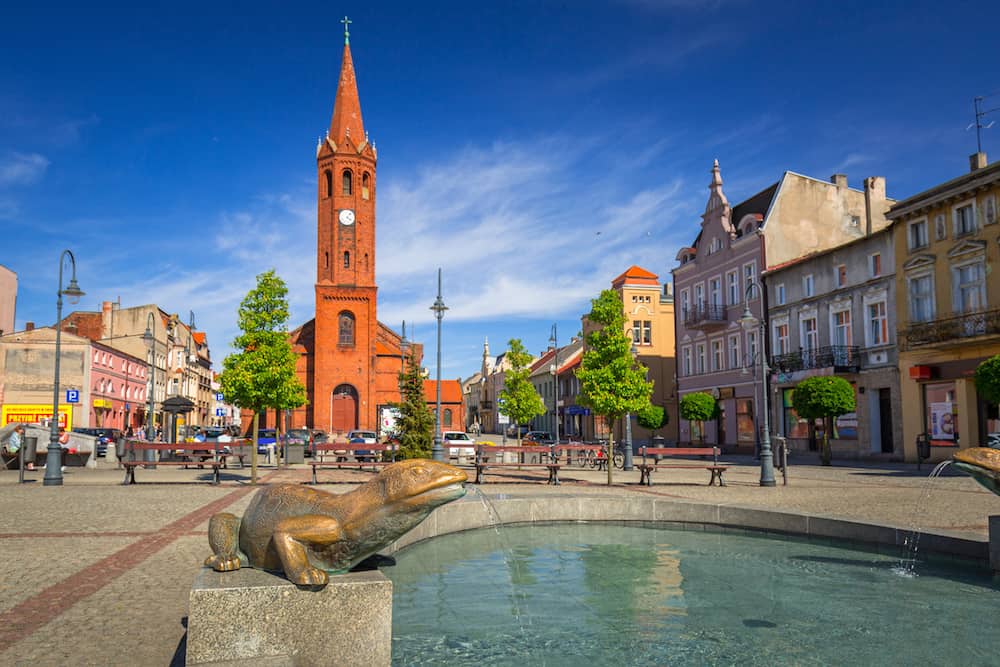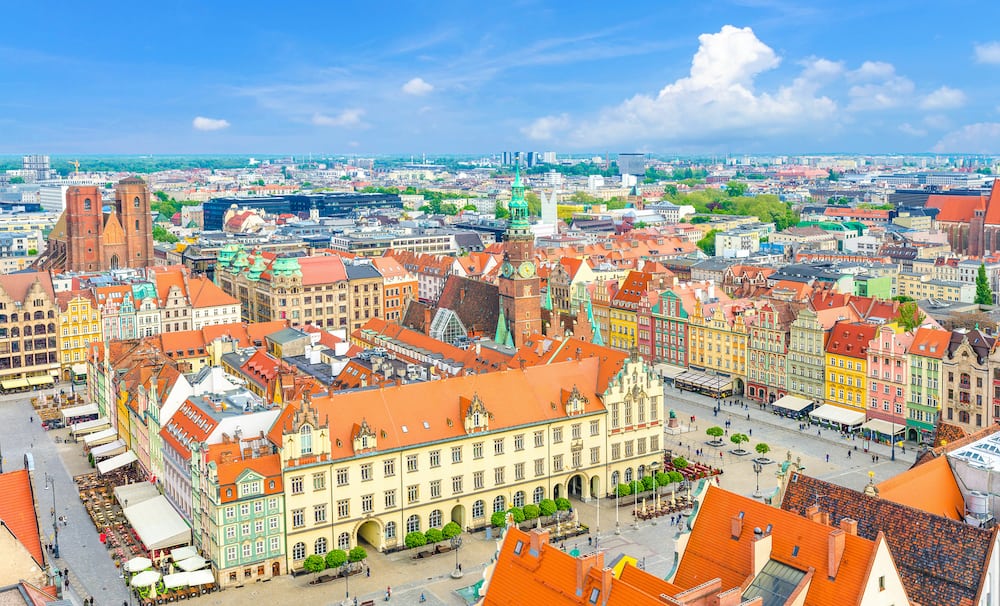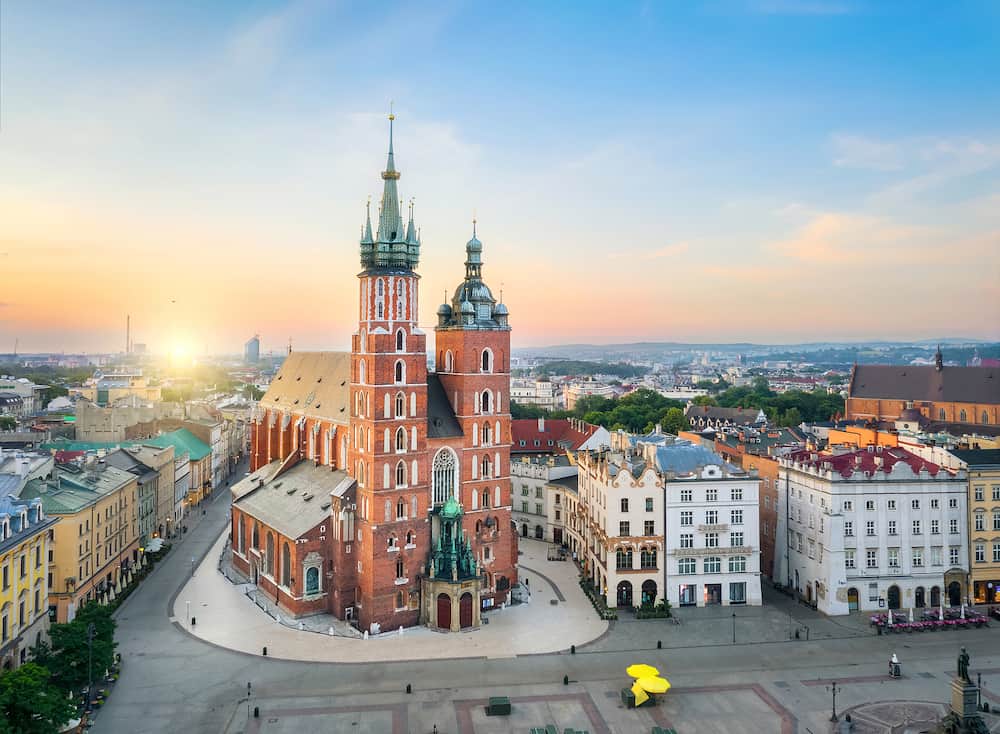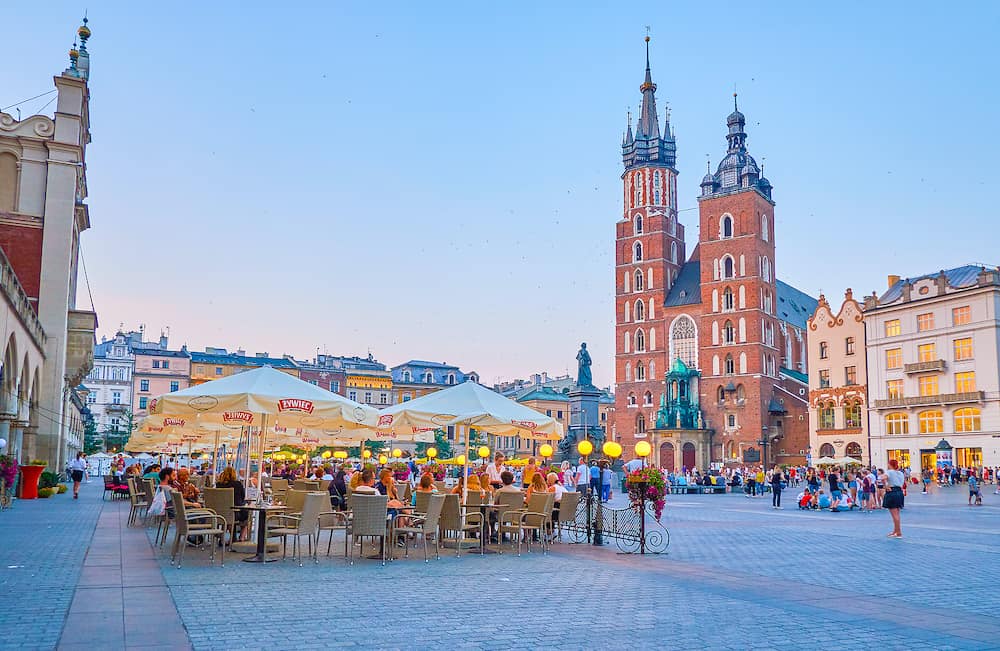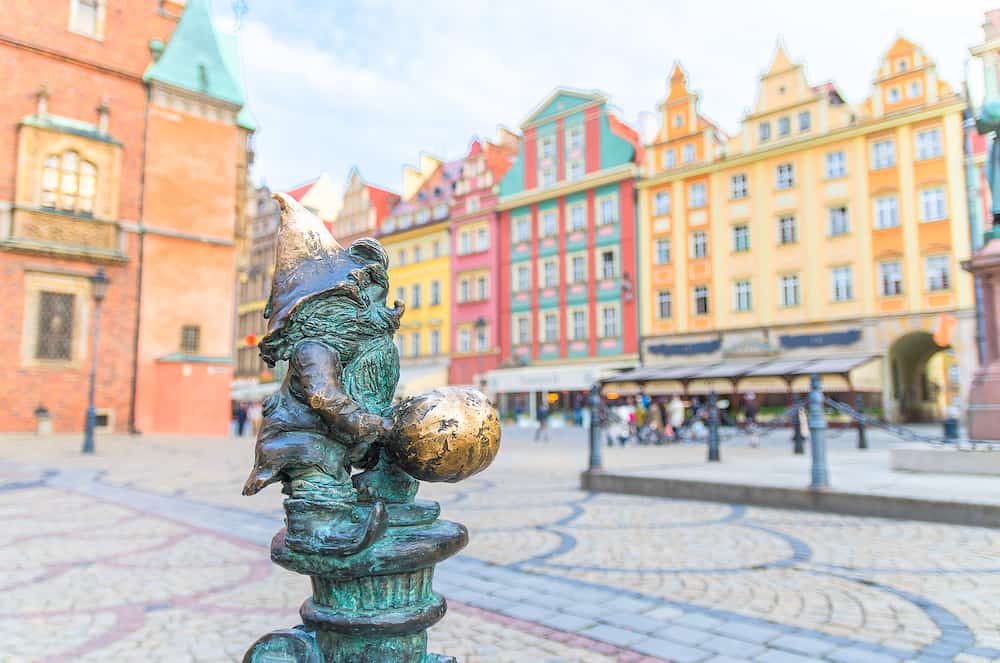Ultimate Travel Guide to Warsaw
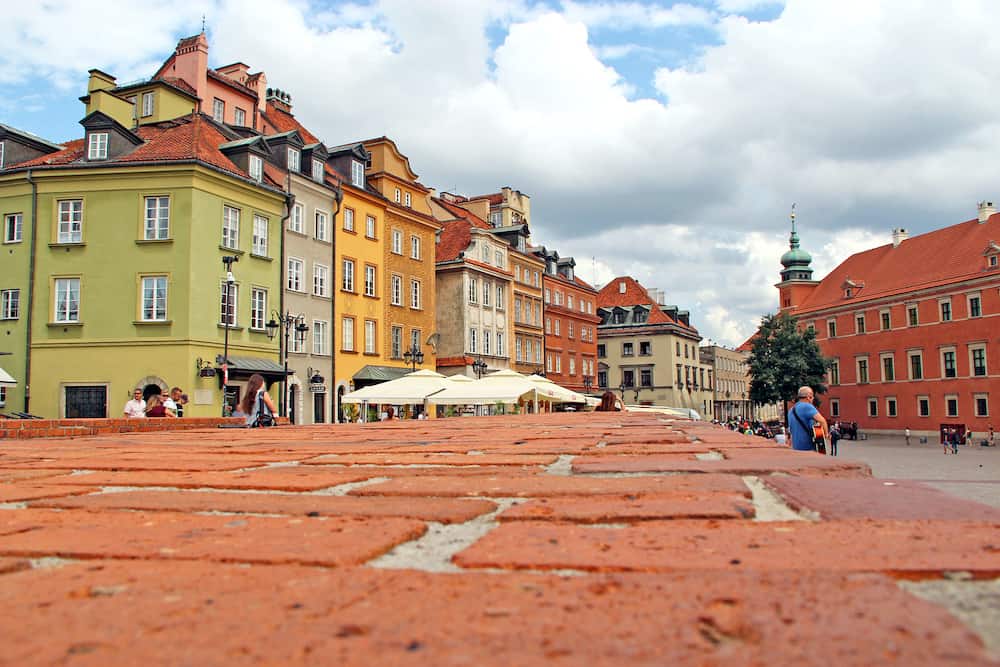
Warsaw is Poland’s capital city and it’s the perfect option if you’re planning a cheap, fun European city break. It’s located just east of the centre of the country on the Vistula River and maintains an idyllic blend of old and new: think royal palaces and castles, cobbled market squares with a variety of rainbow-coloured buildings along with new craft beer bars popping up every week, spectacular skyscrapers and fantastic public transport.
There are so many magnificent royal buildings, historic houses and parks in Warsaw concentrated in one part of the city that it’s been coined The Royal Route which notably features the Royal Castle in Castle Square, Wilanow Palace and Lazienki Park and Palace.
Warsaw also has some fantastic museums, like the Copernicus Science Centre which is a vast warehouse-type building right in the middle of the city on the river.
The POLIN Museum of the History of Polish Jews along with the Jewish Ghetto Memorial and Okopowa Street Jewish Cemetery offers visitors ample opportunity to learn more about the Jewish population in Warsaw and the atrocities faced in World War II.
Warsaw has been dubbed the ‘Phoenix City’ as the city you see today was built from the rubble and ruin of World War II and Warsaw’s ability to overcome and thrive in the last few decades is just one of the reasons this city is so special.
This Warsaw travel guide will show you all the best Warsaw experiences and travel tips, what to expect when visiting, where to stay in Warsaw and things to do in Warsaw which will help you in planning a trip to Warsaw.
Plan your trip
Save on fees abroad with the Wise Card—use it at ATMs, restaurants, and for flights or hotels in over 150 countries. Manage 40+ currencies in real-time with the Wise app.
Need Help Planning?
- Cheap Flights: Find the best deals.
- Accommodation: From hostels to luxury stays.
- Car Rental: Affordable options worldwide.
- Sightseeing Tours: Explore without breaking the bank.
- Travel Adapter: One adapter for all your needs.
- Travel Insurance: Don’t risk it—stay covered.
This post includes affiliate links. Read my full disclosure and content policy.
How to get to Warsaw
Warsaw is really easy to reach whether you’re travelling from elsewhere in Europe or further afield. Warsaw Chopin Airport is the city’s main international airport (Modlin Airport primarily services low-cost airlines) and flies directly to cities across Poland, Europe and the Middle East via airlines like Wizz Air and LOT.
You may need a layover if you’re flying from further away, or Lodz Airport is a viable option at 145km away.
Since Poland shares a border with seven countries, it might be much cheaper (and environmentally friendly) to travel by bus or train to Warsaw if you have the time.
You can travel from Kiev to Warsaw for less than €25 on an overnight Flixbus and from over 30 destinations within Poland for less than €5.
You can also travel by train from the airport and elsewhere to Warsaw Centrale station, though travelling by train is less straight-forward than buses.
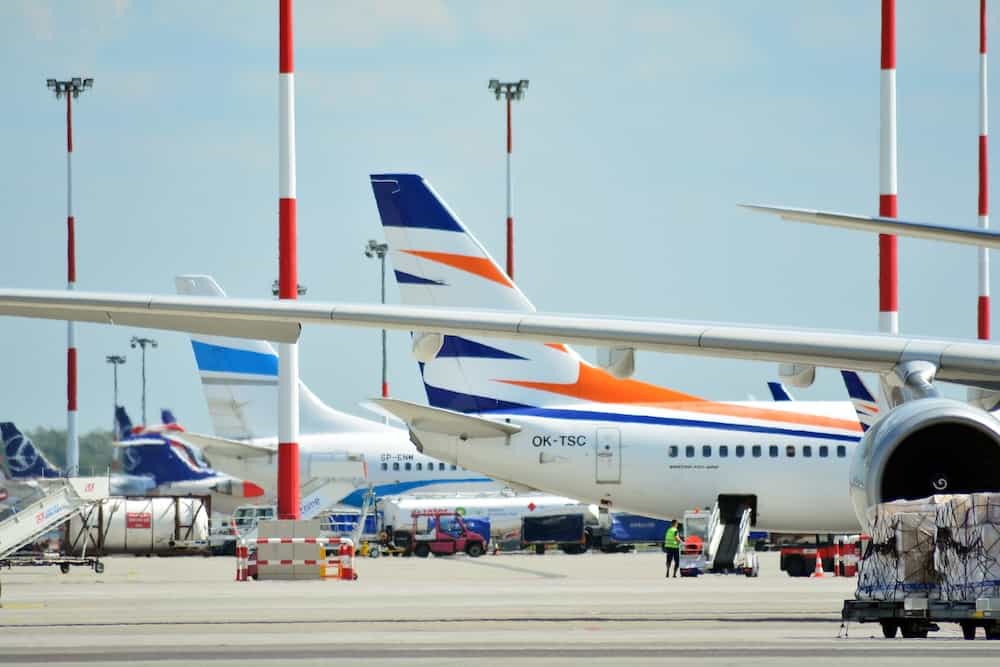
What to expect in Warsaw
Warsaw is Poland’s capital city where the main language is Polish, and the currency is the Polish Zloty written as PLN or zł. Poland is also part of the EU and the Schengen zone.
English is spoken much more widely amongst younger generations than older ones and people who work in the tourism industry are likely to speak English to a good level, though you may find many menus in restaurants that are only written in Polish, for example.
Poland, in general, is a cheap country for most westerners to travel to. Public transport is usually less than €1 per ticket and beers less than €3.
Tipping is expected in Poland, around 10-15% is fine depending on the level of service. In terms of safety, Warsaw is like other European capital cities in that it’s generally safe, though there is a higher police presence, so just follow your common sense.
How to get around Warsaw
Though you will most likely find it easier to walk between a lot of the attractions in Warsaw’s Old Town (The Royal Route, for example) if you need to use public transport in Warsaw to travel between neighbourhoods or back and forth from your accommodation, there are a lot of great options including metro, bus, tram, cycling, trains and UBER is very cheap in Warsaw.
Warsaw’s metro system is only around 25 years old, making it one of the newest in Europe. The SKM, as it’s called in Poland, is situated on the west side of the river and travels from north to south so that’s a great option if you need to travel long distances through Warsaw quickly.
Trams are much easier to understand than buses for shorter distances. There are also public use bikes and electric scooters (download the ‘Lime’ app) available in docking stations around the city.
The best time to visit Warsaw
Warsaw experiences pleasant, warm summers and frosty winters which are typical of in continental Europe. The best time to visit Warsaw for warmer weather is between June-August with the temperature reaching highs of 25 degrees Celsius.
Warsaw’s busiest months for tourism are June, July and September so even though the weather is generally good during these times, accommodation prices are at their highest. Though Warsaw is a much cheaper city to visit in summer than other European cities.
It can still be quite cold in spring, so autumn is a better time of year to travel for the off-season and rain can occur at any time of year.
Warsaw is a fantastic option if you want to visit a traditional Christmas market as there are markets in every major square across Old Town, the biggest being the one in Castle Square selling mulled wine, gifts and other traditional festive treats!
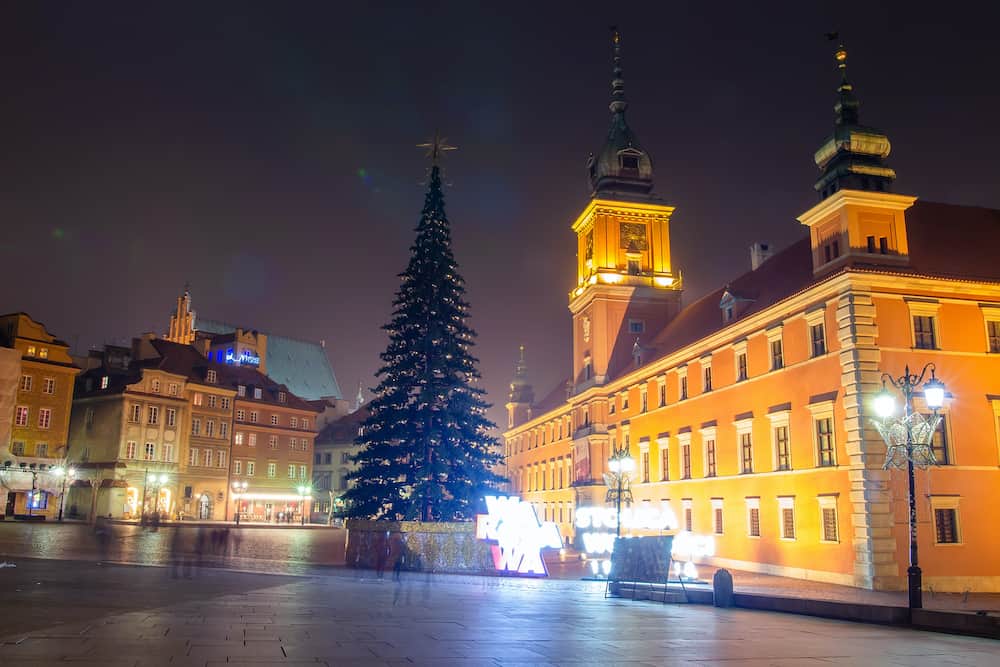
Things to do in Warsaw
The Royal Route
Most of the top things to do and see in Warsaw are all along a trail named The Royal Route, which is made up of notable buildings and places in the city.
There are roughly 20 different buildings, parks, churches, palaces and landmarks on the route, and it would be impossible to fully explore every single one (unless you’re planning on moving to Warsaw!) but there are a few worth focusing on.
The route starts with The Royal Castle in Castle Square, which dates back to the 14th-century and served as the Polish monarchy’s official residence. It then continues south down Krakowskie Przedmieście to St Anne’s Church which has a bell tower offering one of the best viewing platforms over the city.
The route passes through Lazienki Park and Palace before ending at Wilanow Palace. It’s well worth walking through the whole thing to fully appreciate how many beautiful, historic buildings there are in Warsaw.
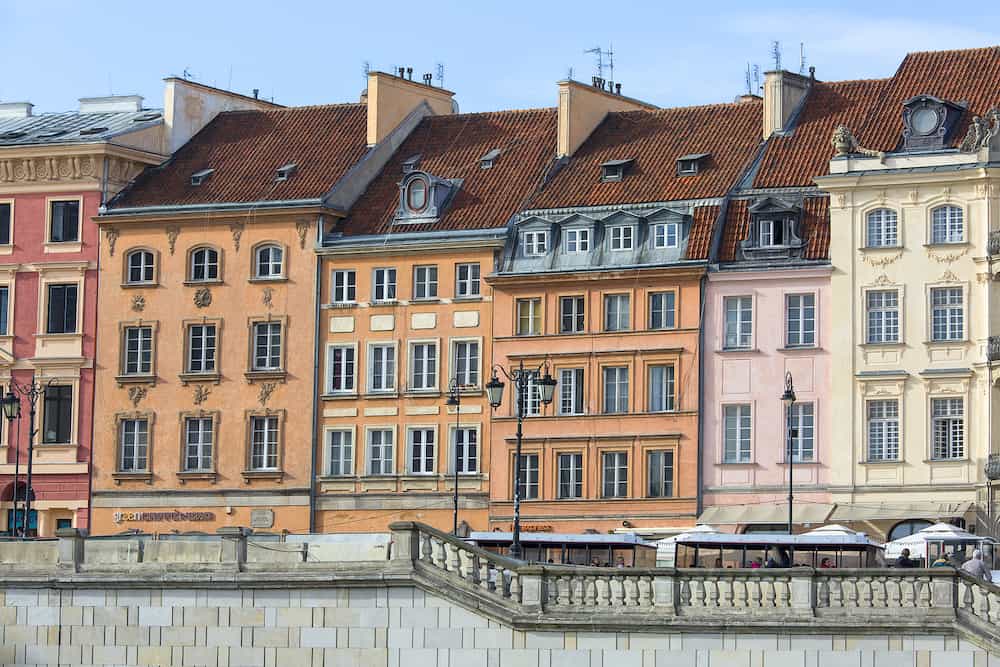
Warsaw Old Town
There’s a reason why Warsaw’s historic centre (also known as ‘Old Town’ or ‘Stare Miasto’ in Polish) is a UNESCO World Heritage Site. As stated earlier, around 3/4 of this part of the city was destroyed during World War II and it was all rebuilt.
But not only that, Old Town Market Square and the rest of the historic centre was painstakingly rebuilt exactly how it looked before the war which is impressive enough but the area featured buildings from the 13th-20th century.
Many with highly-decorative facades and most of the work was completed within five years. It’s astounding how much of Warsaw was reconstructed and restored and really needs to be seen to be appreciated.
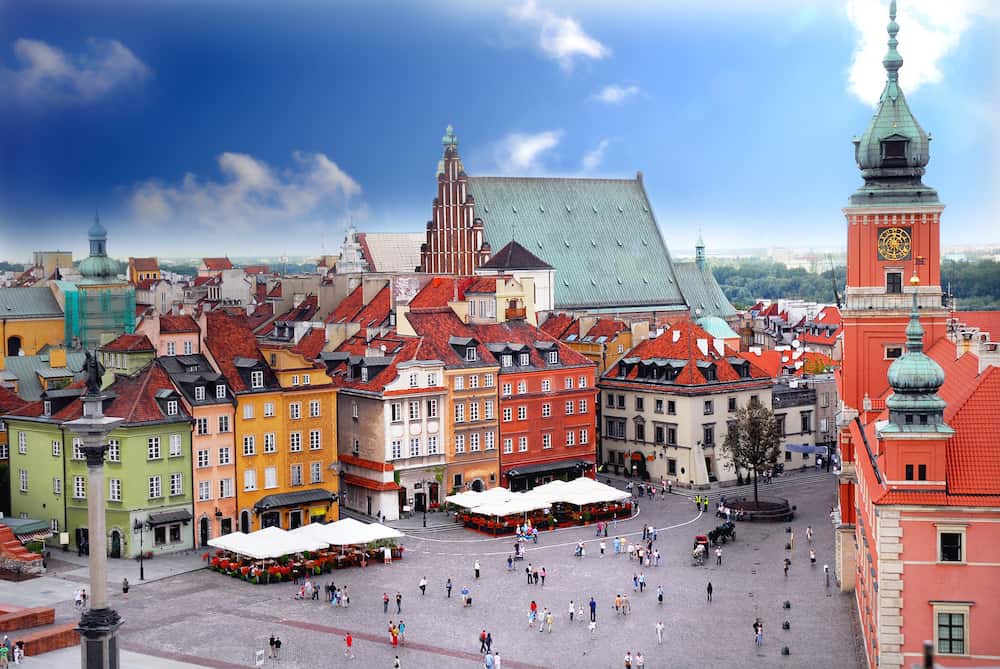
Fryderyk Chopin Museum
The famous composer, Fryderyk Chopin, was Polish and there are lots of great museums, memorials and buildings, such as his birthplace, open to visitors.
One of the best Chopin-related attractions is the Chopin Museum in Warsaw. The exhibit features a detailed timeline of Chopin’s life in the late 19th-century including lots of multimedia displays so you can hear his music throughout. A must for any pianists or classical music fans!
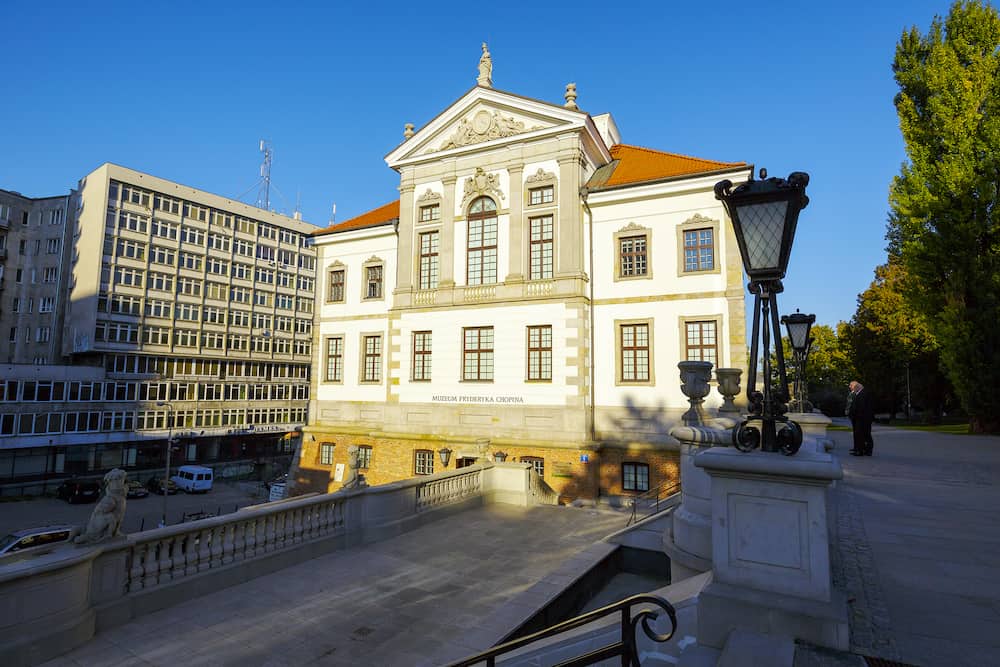
Warsaw Night Market (Nocny Market)
Some travellers want to visit the Polish capital purely to enjoy the Warsaw nightlife. There are so many fantastic clubs, bars, craft beer taprooms and all for a lot cheaper than most other European capital cities.
The Warsaw Night Market is a cool weekend-only space that brings street food trucks, pop-up versions of top Warsaw bars and cafes all under one roof with neon lights and street art covering the walls of the market which is usually held somewhere like a disused train station, but moves venue every few years. You can even get a tattoo at one of these events!
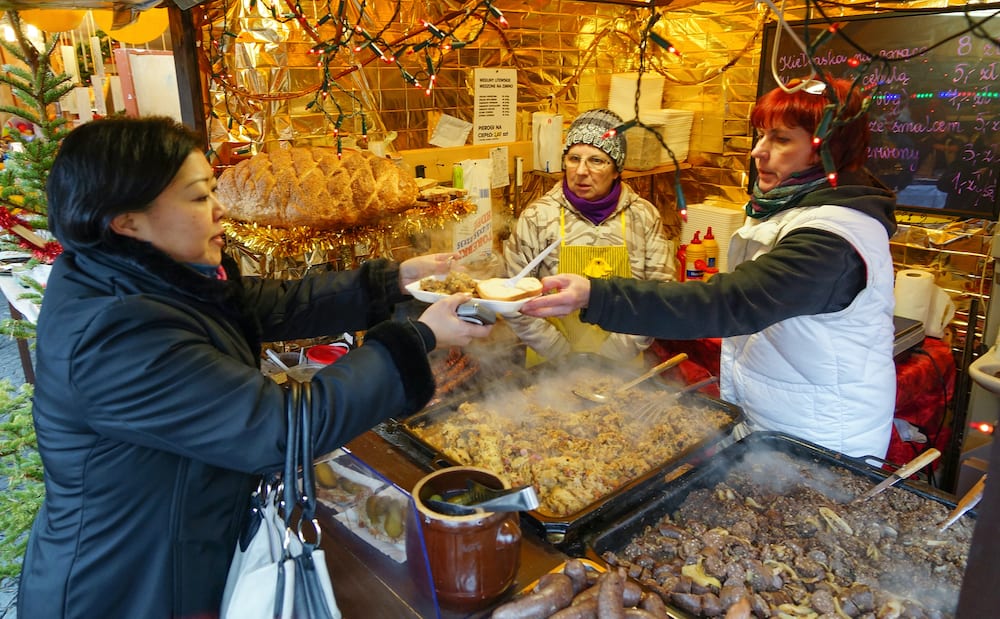
POLIN Museum of the History of Polish Jews
Set in the site of a former Warsaw Jewish Ghetto, the POLIN Museum of the History of Polish Jews is an incredibly extensive and detailed museum dedicated to the existence of Jewish communities in Poland a thousand years ago up until and after the events of World War II.
Opened in 2014, this is a truly fascinating museum unlike any other Jewish museum in Europe because it covers such a wide timeframe.
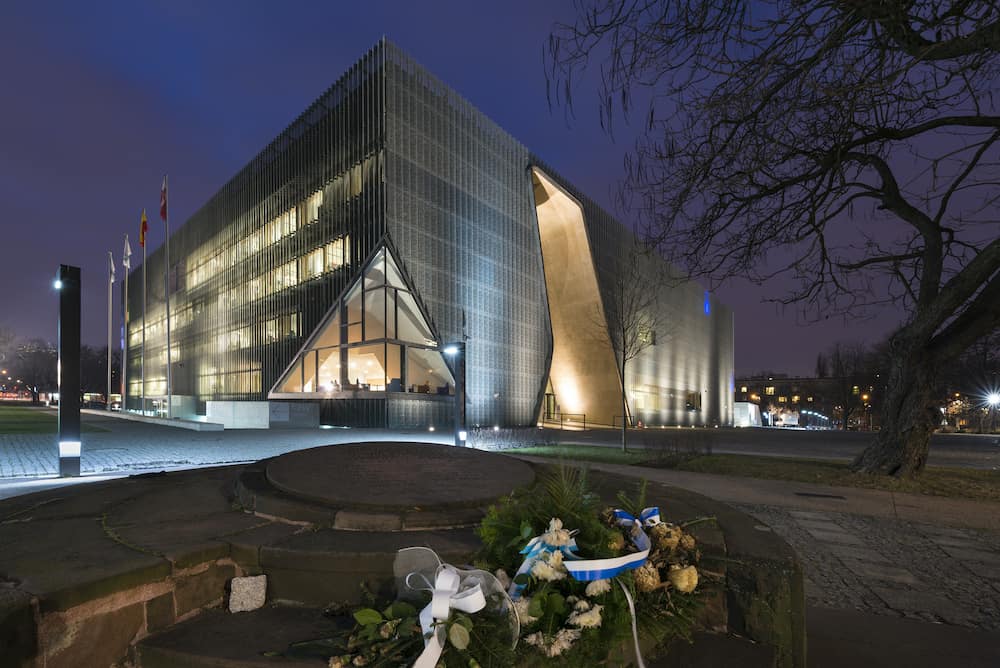
Copernicus Science Centre
The largest science centre in Poland and conveniently located in the centre of Warsaw, the Copernicus Science Centre is the perfect place to visit in the city if you’re travelling with children.
Over 450 of the exhibits and displays are interactive so that kids can join in and do experiments themselves. You might need more than an afternoon at this place with the sheer amount there is to do!
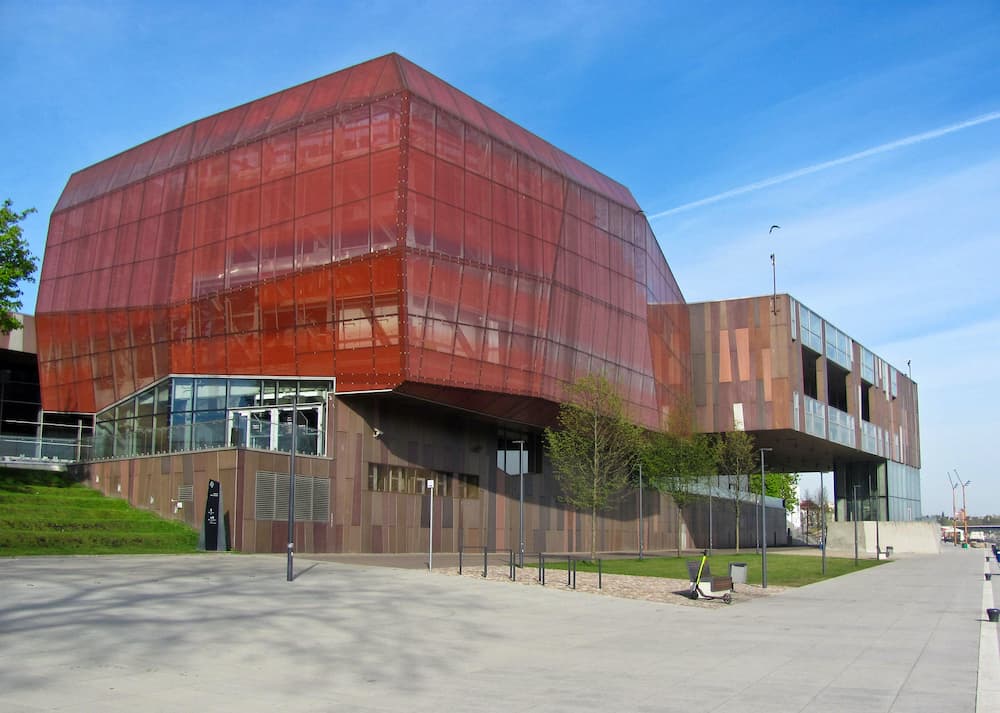
What to eat in Warsaw
Traditional Polish food is warming, hearty comfort food and you’ll find plenty of that here in Warsaw as well as lots of international cuisines, often at a lower price than you would expect in other capital cities in Central Europe.
Polish food often consists of soups, stews and Pierogi is without a doubt Poland’s most famous dish, which is like a dumpling filled with meat and vegetables.
The best restaurants to find local Polish food in Warsaw are the Milk Bars. They were introduced in the 1960s during the communist era and are run like cafeterias and are usually a low-cost option.
Most closed down after democracy was introduced but the few still left remain relatively unchanged and are definitely a local Polish experience. Some Milk Bars to check out are Sady, Bambino and Prasowy.
Head to Hala Koszyki if you and your travel buddies want to try different cuisines, as it’s essentially a food court but with fantastic restaurants instead of fast food.
The craft beer movement has definitely taken off in Warsaw, not that beer hasn’t always been the drink of choice for Poles, so make sure to check out a couple of taprooms if you like beer.

Where to stay in Warsaw
Budget – It won’t be difficult for budget travellers to watch their pennies in Warsaw, especially if you choose to stay in one of these great hostels.
DREAM Hostel Warsaw is centrally located in Warsaw Old Town in a beautiful building with a soft blue facade and a modern, up to date interior with fantastic breakfasts on offer near lots of bars.
Oki Doki is another great option with two locations in the city. This hostel is much quirkier, decorated in bold colours with super friendly staff.
Mid-range – Affordable hotels in Warsaw cost about the same as hostels in other cities, so you’ll definitely get more for your money in Warsaw.
The PURO Centrum Hotel is just a little south of Old Town near public transport and has phenomenal views over Warsaw from restaurants and suites that have a contemporary, homely decor.
If you’re travelling with children or would just prefer an apartment, check out Dekart 5220 Arkadia Apartments & Rooms for very affordable accommodation from €35 per night.
Luxury – H15 Boutique Hotel is an award-winning, 5-star hotel with two locations in Warsaw that offers suites from just €100 per night. It’s located really close to the Palace of Culture and Science and has all you could want in a modern hotel including huge bathrooms.
Bellotto Hotel is another great option if you’d prefer a less modern and more elegant and luxurious hotel. A mere 5-minute walk from Castle Square, the Bellotto Hotel is housed in a 16th-century palace with a monochrome theme and plush soft furnishings fit for a Queen.
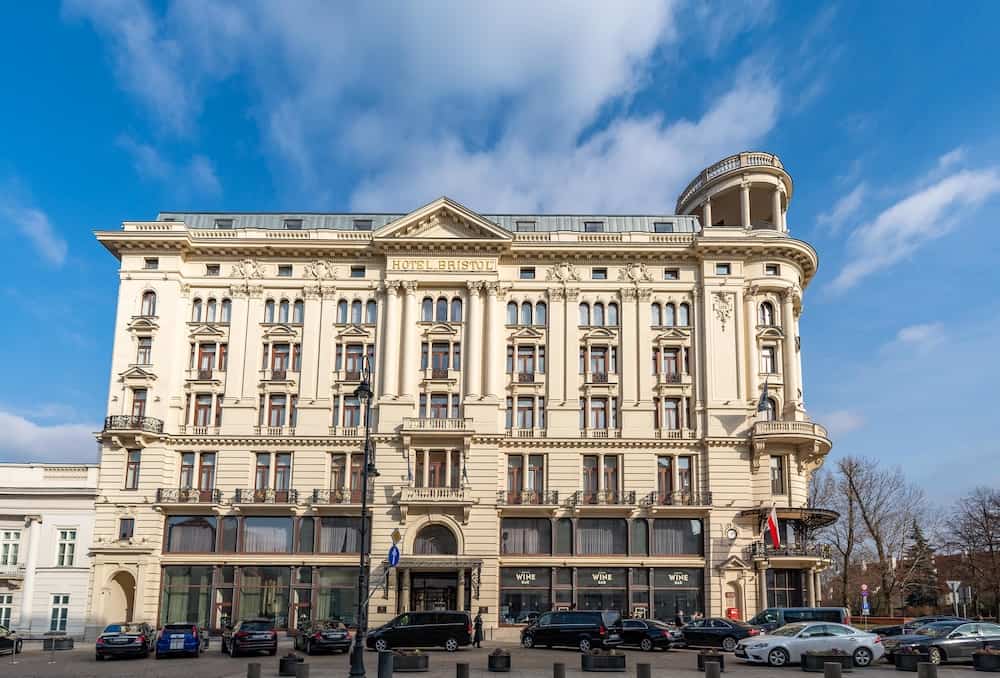
Tours to do in Warsaw
Off the Beaten Path Van Tour
Travel back in time and in style on this ‘off the beaten path’ tour of Warsaw. See historic communist-era buildings such as the Palace of Science and Culture and other sites of significance in a retro Nysa van driven by a knowledgeable, local guide.
You’ll also be able to see more of the bohemian Praga neighbourhood, famous for its street art and huge murals and you’ll even be treated to a traditional Polish lunch.
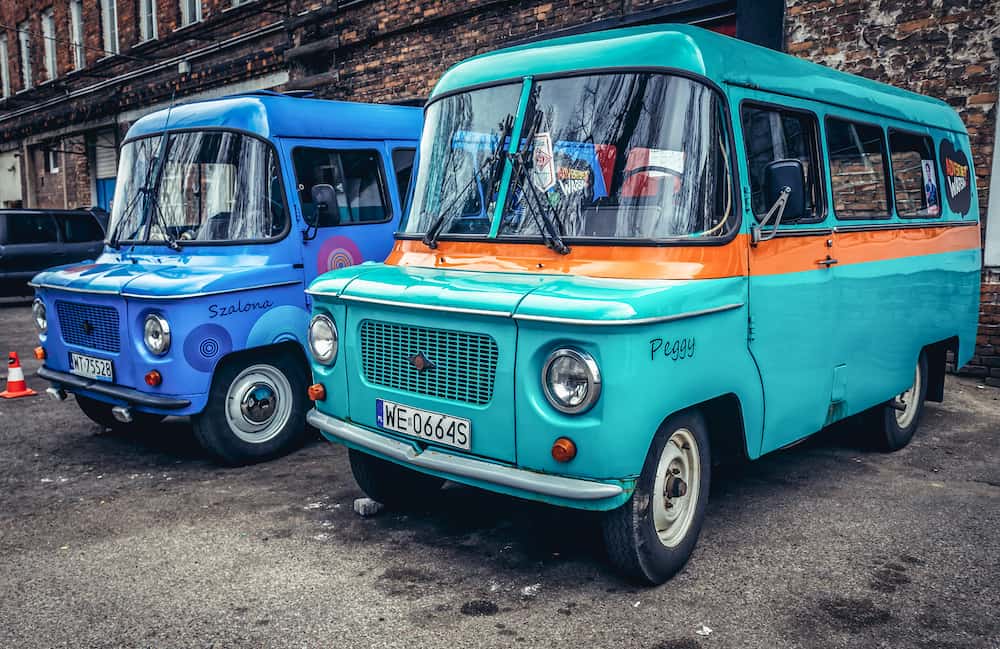
Polish Food Tour
Want to taste as many Polish delicacies as you can fit in your stomach? Then you need to book yourself on this Polish food tour of Warsaw.
You will be taken to 4-5 different restaurants and cafes in the city, avoiding the need to do all the research yourself and still not finding the best restaurants in Warsaw, where you’ll be able to sample up to 17 different Polish dishes, including Pierogi with lots of different fillings.
Learn how each dish is made and the history of Poland’s culinary specialities and you’ll also be given a small recipe book of Polish food if you want to try and recreate some of them at home!
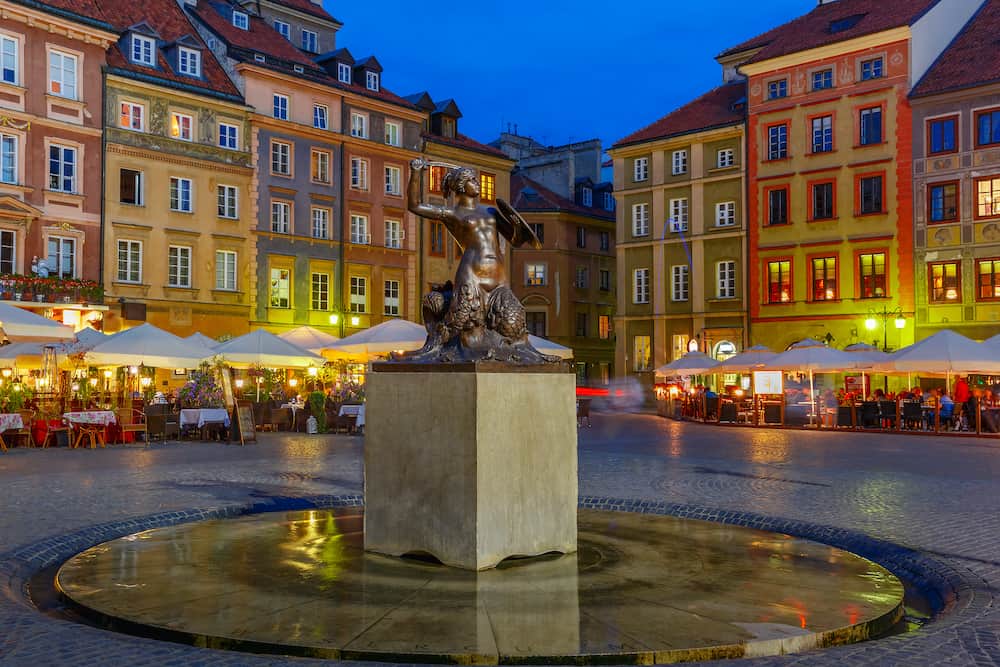
Jewish Heritage Retro Fiat Tour
Because of the horrific events during World War II that led to the deaths and suffering of millions of Jewish people, many Polish, Warsaw truly understands the importance of commemorating all the lives lost and celebrating the Jewish faith and culture and you can learn all about the Jewish community, both past and present, in Warsaw with this quirky retro fiat car tour.
Pay your respects at the Jewish cemetery, the Ghetto Wall and historical ghetto neighbourhood, the Nozyk Synagogue and the Museum of the History of Polish Jews. You can also request stops to the driver who will be extremely knowledgeable about the history of Jewish people in Warsaw.
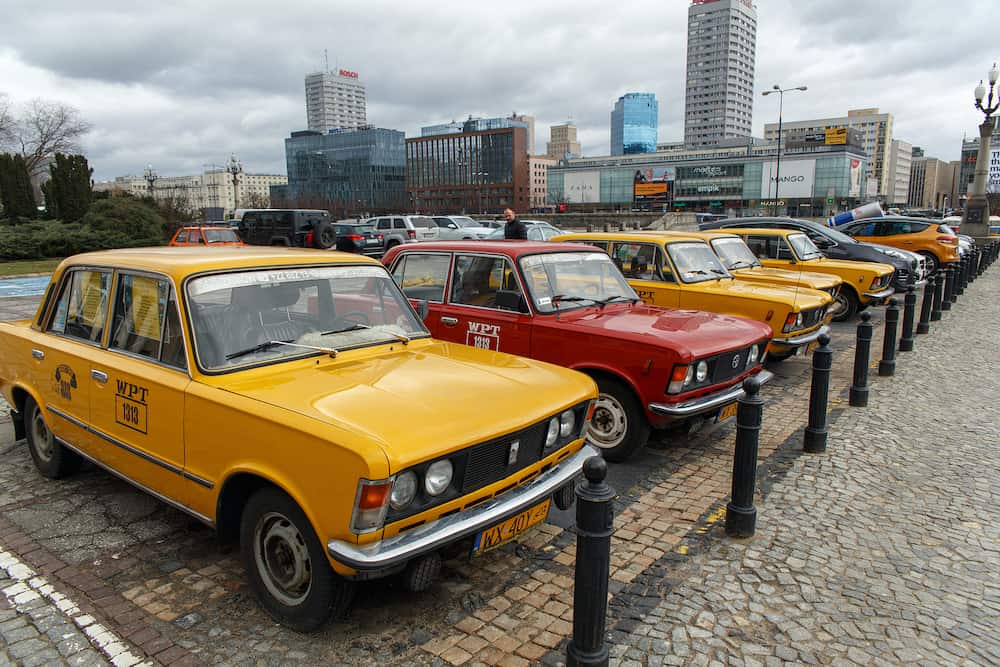
Day trips from Warsaw
Auschwitz
It’s common to take a tour from the Polish city of Krakow to visit the Auschwitz-Birkenau concentration camps but there are plenty of Warsaw tours available too. This highly rated tour takes small groups to visit the former Nazi extermination camp in order to remain respectful of the site.
You’ll be able to skip the lines and dive right into the tour with a guide who will not only be able to explain your surroundings but will also be able to explain the history of the Third Reich and a lunch consisting of traditional Polish food is also included.
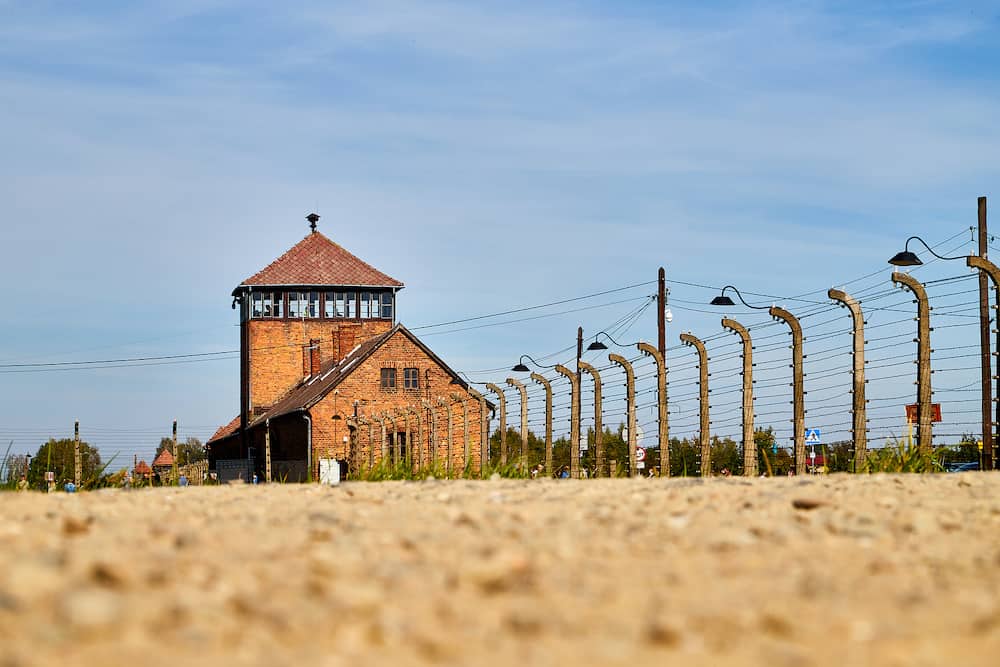
Wolfs Lair and Swieta Lipka
If you’re interested in learning more about World War II and visiting sites of interest, then this day trip to Wolfs Lair and Swieta Lipka is completely off the beaten path and really fascinating.
This trip combines visits to Wolf’s Lair, which was Adolf Hitler’s Eastern Front military headquarters about 300km north of Warsaw where he lived for four years, and Swieta Lipka which is a village nearby.
Swieta Lipka is full of striking Baroque architecture and is somewhere so few English-speaking tourists will ever visit. Lunch is also included, and the group size is kept small.
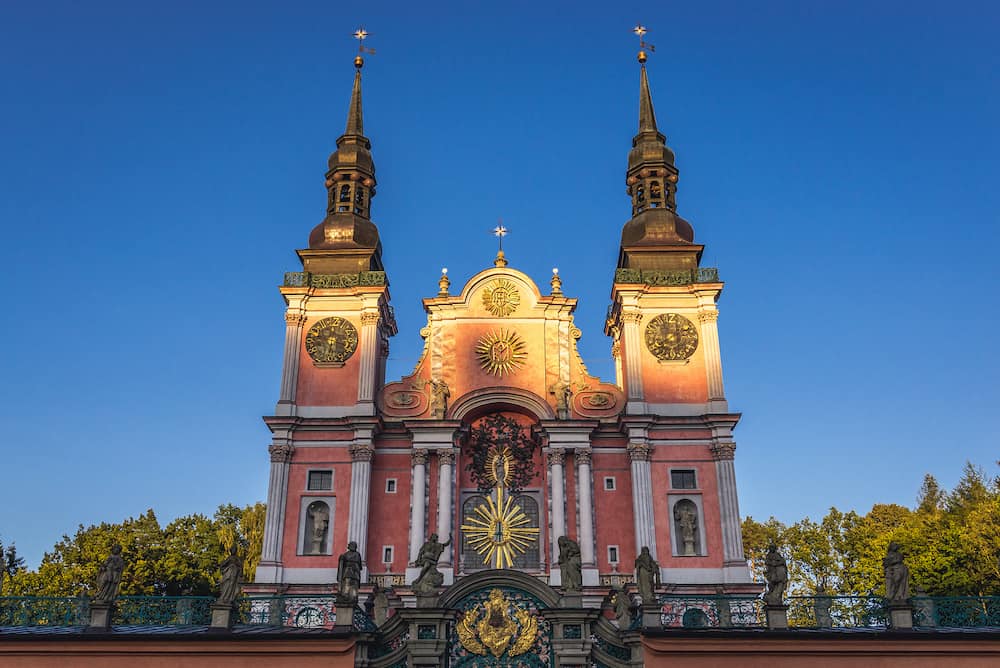
Gdansk and Malbork
Do you fancy visiting another fantastic Polish city on your break to Warsaw? It seems impossible but if you’re tight on time and you want to see as much of Poland as you possibly can then this day trip to both Gdansk and Malbork is for you.
Malbork Castle fortress is one of Europe’s largest brick buildings and it looks like a cross between the Tower of London and the castle featured in Disney’s Frozen. Gdansk is Poland’s sixth-largest city right on the Baltic Sea in the north.
The city also needed to be rebuilt in the aftermath of World War II and there are lots of things to see like Gdansk’s Golden Gate.
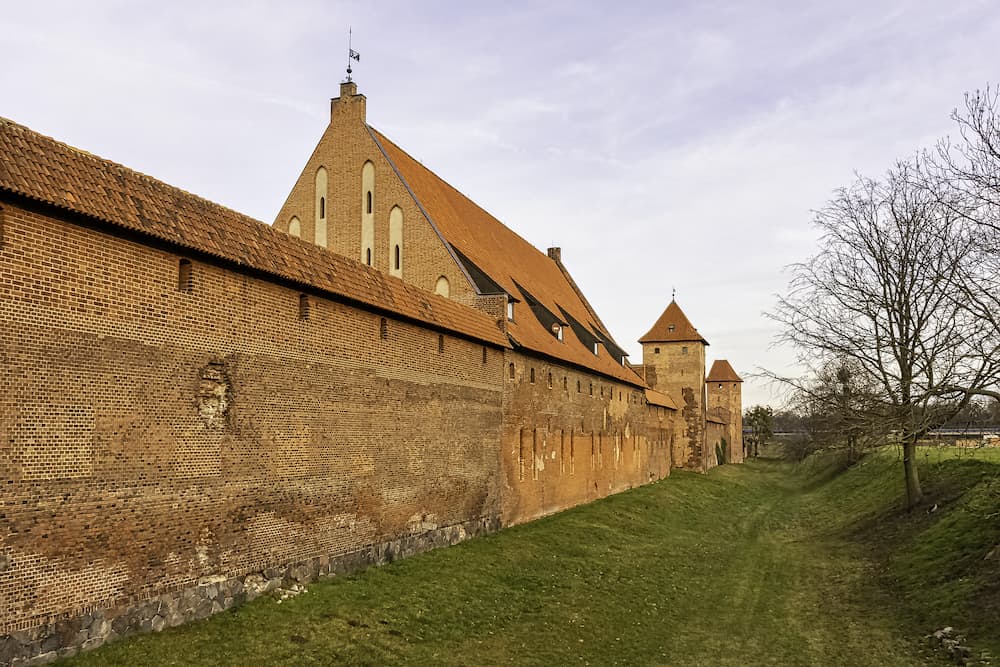
Recommended tours in Warsaw
- Traditional Polish Cooking Class in Warsaw
- Warsaw Afternoon seat in coach group city sightseeing tour with pick up&drop off
- Intimate Chopin Concert in Warsaw, in historical building on Chopin’s Route
- Warsaw Vodka Night Private Tour by Retro Fiat
- Warsaw in a Nutshell Walking Tour
- Warsaw Evening Private Tour by Retro Fiat
- Dark Side of Warsaw Guided Tour: Praga District by Retro Bus
- The King’s Tour: Warsaw Running Tours
- TOUR PACKAGE: The Shooting range professional course
- #1 Pub Crawl Warsaw with Premium Open Bar
If you’d like to save it for later, please save it to Pinterest.
